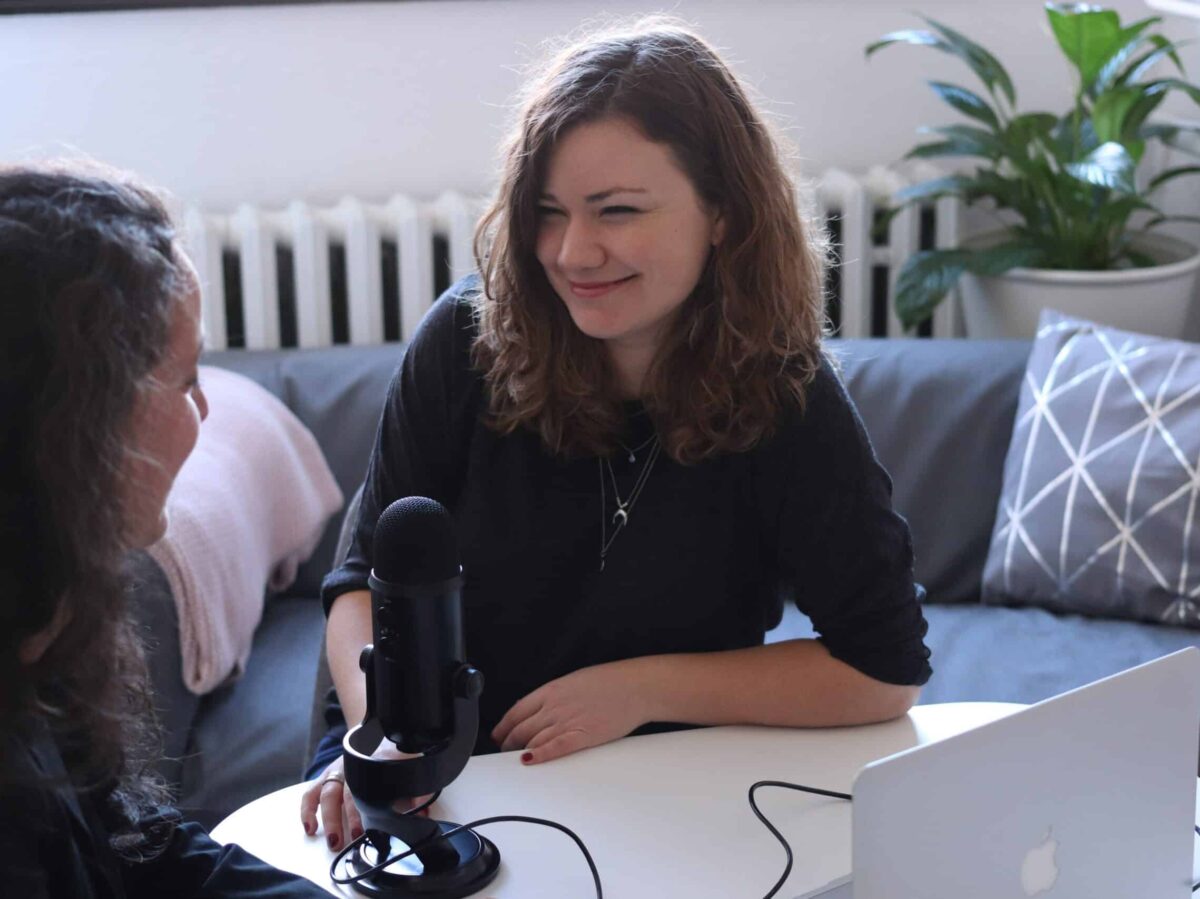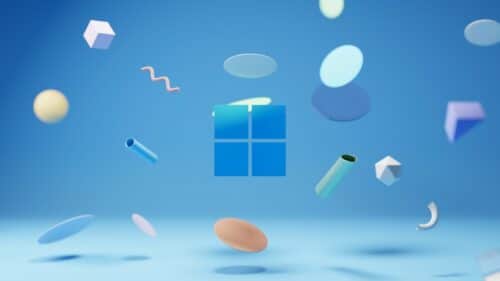A video podcast can help you connect with your existing audience, reach more people, and promote your product or service. All while entertaining and informing your target audience. Today, video podcasts aren’t just limited to YouTube, Spotify has added video capabilities and other podcasting platforms may follow.
So now is a great time to start a video podcast. But where do you begin? Whether you’re podcasting for the first time or adding video to an audio-only podcast, this guide will help you learn how to start a video podcast.
What is a podcast?
A podcast is a series of on-demand audio (or video) content that generally centers around a single idea or topic and is delivered over the internet.
Here’s a simple example: a radio station has a radio show that plays over the airwaves. If the station takes a portion of that show and makes it available to stream or download on-demand on their website, that show becomes a podcast.
A video podcast is any podcast that adds a video element. This could be as simple as pointing a camera at the host of your podcast and hitting record. Some video podcasts are more robust, including animations, live-action scenes, graphics, charts and more.
Listeners may access podcasts directly through your website, or via a podcast listening app. Popular podcast listening apps include:
- Spotify
- Apple Podcasts
- Google Podcasts
- Pandora
- Audible
Some of these apps double as podcast hosting platforms, where creators can host and share their podcasts. In addition to audio-only podcasts, some platforms and services offer support for video podcasts as well. Spotify is among the most recent combined hosting platforms and listening apps to introduce support for video podcasts.
The lines between podcasts and other forms of streamed entertainment quickly blur. What separates video podcasts from YouTube shows or other video content delivered consistently on social media? Not much, although, in a podcast, the focus tends to be on the audio rather than on the visual aspects of the broadcast.
Why start a video podcast?
There are several reasons to start a video podcast:
- To reach new audiences
- To build a deeper connection with your audience
- To promote your business, product, book or show
More than 464 million people listen to podcasts and that number has grown rapidly over the last few years. Unlike some other pandemic-related activities, podcast listening seems to become an ingrained habit for many people.
The bulk of these listeners are between the ages of 12 and 34, although older listeners are increasingly embracing the medium. Podcasting can help you build trust with audiences in these demographics. Unlike an ad, which may annoy audiences, listeners and viewers actively seek out podcasts to consume. That may mean they’re more open to any sales messages you do share.
How to start a video podcast (step-by-step)
If you already have an audio-only podcast, you’ve done most of the work already and can skip to the section below. If you’re starting a podcast for the first time, these steps will help you get started.
1. Choose a focus for your video podcast
Decide what your podcast will be about. Make sure it’s not too broad i.e. we’re going to talk about our business. Drill down to something more concrete like, we’re going to help people understand animation by exploring the basic principles underpinning the art form.
At the same time, choose something that gives you the opportunity to explore the range of topics your audience might be interested in hearing about. For example, we at IdeaRocket Animation could do a podcast about video promotion tips or breaking down the best animated videos of all time. That would give us plenty to work with, but still let listeners know what to expect when they tune in.
While you’re thinking about the big picture, select a name that reflects this focus and won’t be confused with other podcasts out there. This is a good time to start thinking about taglines and structure as well. Prepare your theme songs (if you want them) logos, taglines, and other branding elements.
2. Plan the first few episodes
You’ll want to plan several episodes before your first show goes live so you’re never left scrambling to set up content at the last minute. Write scripts for those first episodes. If you plan to invite guests, get on their schedule soon as possible. Start creating any animations or visual content for those first episodes as well.
Consistency is key. Just as your favorite television show comes on at the same time, on the same channel every week. Your podcast schedule should be predictable. Do the up-front work now so audiences know they can depend on you.
3. Select a hosting platform
You’ll need a podcast hosting company to store your podcast files and create your podcast feed. Look for one that supports both video and audio podcasts. Consider cost, available tools, metrics reporting, and support to pick a podcast hosting company that fits your needs and level of experience.
The hosting platform will serve your podcast out to podcast listening apps like Apple Podcasts and Google Podcasts so listeners can use their favorite app to access your content.
4. Record your first few episodes
This step is pretty self-explanatory. Follow your script and record your video podcast. Make sure you’re following video recording best practices to maximize the quality of your content.
5. Put your podcast online
Follow the directions of your hosting platform to put your video content online. You should include a blurb that helps listeners decide whether this podcast episode is right for them. Most podcast hosting platforms will give you the option to tag or choose topics related to your episode. This makes it easier for listeners to find your content.
Tags are similar to keywords and you can research them in the same way you might search for SEO keywords for any piece of content.
6. Promote your podcast
Do not skip this step! You’ll get the most traffic for your podcast if you promote it. Share it on social media, add a button to your website, email your mailing list. Promote your video podcast the same way you would share any other content.

Convert your audio podcast into a video podcast
To convert your audio-only podcast into a video podcast you’ll do everything you’re already doing, writing scripts, choosing topics, posting your podcast online. There’s just a couple of extra steps:
- Make sure your host accepts video podcasts. Some podcast hosting platforms are audio-only. If your existing host is one of them, switch to a video podcast hosting platform like Spotify for Podcasters.
- Record video. If you’ve only been recording audio up to this point, you’ll need to add video to the mix. Use your smartphone or invest in a digital video camera.
- Consider graphic elements. If you’re going to add a new dimension to your podcast, you should make the most of it. Include logo overlays, title cards, or even custom animation to help your video podcast stand out.
- Spread the word. Don’t forget to tell your audience that you’ve added video to your podcast. Mention it during the cast and post about it on social media.
Bring in the professionals
Compelling video podcasts. Eye-catching animations. This content isn’t always easy, but it can improve your reach, strengthen audience connections and aid promotion efforts. Plus it makes your brand look more polished and professional. For help creating a professional-looking video podcast, contact the live-action video and animation experts at IdeaRocket Animation.



